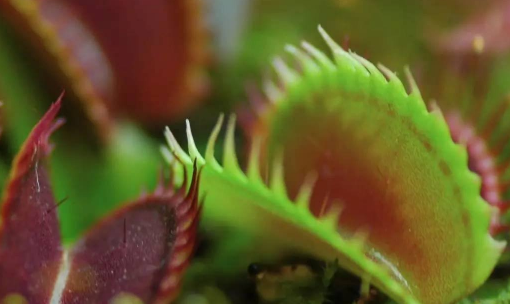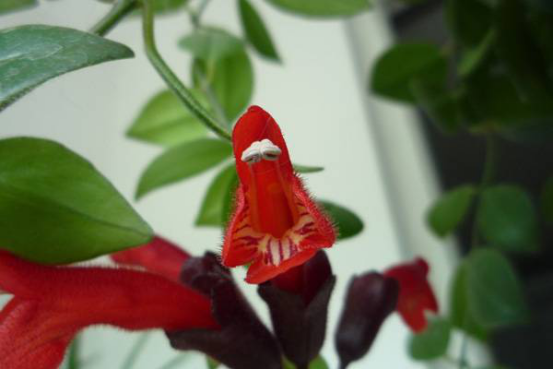Propagation method of Crocus sativus L.
Among the propagation methods of saffron, cutting is a more convenient method, and the survival rate of cutting is higher, for family breeding friends, the maneuverability of cutting is also strong.
Cutting propagation of lipstick flowers can be carried out all the year round if the temperature is right. But if you want a higher survival rate, cuttage is best carried out during the saffron germination and growth period in spring, so that it is easy to take root and survive.
When cutting, cut the 10 cm left and left length branches at the top of the branch as cuttings, insert them into a container with clean sandy soil as the substrate, water appropriately, keep the room air moist, and keep the temperature at about 25 degrees Celsius. Generally, the cuttings will send out root buds in about a month, and after the root system is strong, it can be transplanted in the flowerpot for maintenance.

The culture method of how to raise saffron
Lipstick flowers are also called orchids, flowers and plants, etc., are excellent hanging plants introduced into China in recent years, flowers and leaves all have high ornamental value, beautiful plant shape, luxuriant stems and leaves, bright flowers and colors, can be placed in several cases, can also be overhung and watched, as a small indoor foliage and flowering plant, let's take a look at the breeding methods and matters needing attention of saffron!
Growth habits of saffron
The quality of the cultivated soil of Carthamus tinctorius is better than the loose and fertile sandy loam, and the drainage is good. The planting area must be cool and ventilated, with sunshine of about 50% to 70%, and avoid direct sunlight. The suitable temperature for childbearing is about 15-25 ℃. Like the semi-overcast environment, if the light is too strong or insufficient, the leaves will easily become light green or yellowish green, lack of vitality, lose their due ornamental value, or even die. Such as direct sunlight, dry air, the most likely to cause scorch. Avoid continuous high temperature and humidity, poor drainage and ventilation will cause decay.
Propagation methods of Carthamus tinctorius
The cutting method can be used for the propagation of saffron. In spring and autumn, strong and thick branches are selected, cut into 1 section every 7 to 10 centimeters, and cut into loose sand, or culture soil prepared with serpent sawdust 50%, perlite 20% and coarse sand 30%, maintain proper humidity, accept about 50% sunshine, and grow into roots and seedlings after about 30 to 40 days. After the root group grows vigorously, it is replanted in pots or flower beds.
Culture methods of Crocus sativus
1. Soil: loose and fertile sandy loam is the best soil for safflower culture, and the drainage is as good as possible. The pot soil is slightly acidic, and the pot culture soil made of peat soil, sand and vermiculite can be used, and an appropriate amount of calcium superphosphate is added.
2. Lighting: saffron prefers a semi-overcast environment. In addition to the strong light at noon in midsummer, adequate light should be given at other times of the year, especially in winter. If the light is too strong or insufficient in the placement site, the leaves will easily become light green or yellowish green.
Temperature: Carthamus tinctorius should be placed in a cool and ventilated place, and pay attention to maintain environmental humidity. Avoid continuous high temperature and humidity, poor drainage and ventilation will cause decay. It is not cold-resistant and needs to be indoors in winter.
4. Watering: the soil in the safflower culture basin should always be kept moist, and the stagnant water in the basin should be avoided, so as not to cause root rot. The water demand during the peak growth period from March to September is relatively large, so it is necessary to often water and spray to increase humidity. The weather is getting colder and colder in autumn, so the amount of water and fertilizer should be reduced gradually. The basin soil should be slightly dry in winter.
5. Pruning: when the growth of saffron is exuberant, the heart can be properly removed to promote branching. After the winter flowering period, the residual stems that have flowered should be cut off in time, which can save nutrients, promote new branches and make them blossom.
Matters needing attention in the culture of saffron
1. After putting saffron on the pot, the soil should be kept moist and should not be too wet, especially when there is poor ventilation on the basin, the root system is easy to rot or cause fallen leaves to often spray water mist on the leaves, keeping the air humidity about 80%.
2. In hot summer, saffron can be placed in an outdoor shade shed or in a ventilated place under the shade of trees, with a shade of about 50%. You can also hang the saffron under the scaffolding of the balcony, shade with bamboo curtains, or hang the basin in the south-facing doors and windows where the light is sufficient.
3. Avoid blowing branches and vines in order to avoid sagging stems being worn off by flowerpots. The weather is getting colder and colder in autumn, so the amount of water and fertilizer should be reduced gradually.
4. The pot soil of saffron should be slightly dry when it is maintained in winter. In general, there should be less fertilization or no fertilization, except that some fertilizer solution with a little more phosphorus should be properly applied before budding and flowering.
The culture method of lipstick when will it bloom?
Soil
Saffron likes acidic soil, so it is best to choose slightly acidic pot soil for planting saffron, and peat soil, sand and vermiculite can be selected to prepare culture soil. An appropriate amount of calcium phosphate can be added to the soil. Or choose rotten leaf soil and coarse sand according to the proportion of 8:2, and then add a small amount of mature animal manure or compound fertilizer for cultivation.
Watering
The period from March to September every year is the growing period of Carthamus tinctorius. During this period, the temperature is higher, the water demand of the plant is larger, and it needs to be watered or sprayed frequently to increase the humidity of the air. Open windows as often as possible in summer. After autumn, the amount of water gradually decreased to improve the cold resistance of the plant.
Temperature
The growth temperature of saffron is 18 to 30 ℃, and the optimum temperature is about 25 ℃. Its cold tolerance is relatively poor, and the overwintering temperature is above 12 ℃. It is necessary to keep the potted plants indoors in time in winter and avoid direct blowing of cold wind.
Light
Red orchids like to grow in a semi-overcast environment. In addition to the strong light at noon in midsummer, adequate light should be given at other times of the year. If the leaves of saffron turn red during maintenance, it is mainly because the room temperature is too low or the light is too strong, then you need to increase the room temperature in time. It is easy to cause if the temperature is too low for a long time. The phenomenon of leaves falling off and branches drying up.
Fertilizer application
Saffron needs less fertilizer at ordinary times, and it is better to apply some rotten liquid fertilizer every two weeks. When putting on the basin, add an appropriate amount of livestock hoof horns and broken bone pieces as base fertilizer to make it grow well. In the peak growth period of saffron, mature organic fertilizer solution is applied once in 15 to 20 days, and after summer, more phosphorus and potassium fertilizer is applied, such as 0.1% solution of potassium dihydrogen phosphate and 20 times the solution of rotten fish visceral water and bone water.
- Prev

Propagation method of Castanopsis thunbergii
Although there are many varieties of Castanopsis grossedentata, most of them can be propagated by leaf cutting, so we generally use leaf cuttings in cuttage propagation, of course, it is possible to use sturdy stems for cuttage. When the operation method is used for leaf cutting
- Next

Why don't lipsticks bloom?
1. Improper application of water and fertilizer. During the growing period, the amount of water and fertilizer of saffron is relatively large, but we should not apply too much fertilizer and water too much because we want it to grow faster, which will lead to too much nutrition, cause the flower stem to grow rapidly and affect the differentiation of flower buds. So it doesn't bloom or bloom less. There is too little water and fertilizer.
Related
- Fuxing push coffee new agricultural production and marketing class: lack of small-scale processing plants
- Jujube rice field leisure farm deep ploughing Yilan for five years to create a space for organic food and play
- Nongyu Farm-A trial of organic papaya for brave women with advanced technology
- Four points for attention in the prevention and control of diseases and insect pests of edible fungi
- How to add nutrient solution to Edible Fungi
- Is there any good way to control edible fungus mites?
- Open Inoculation Technology of Edible Fungi
- Is there any clever way to use fertilizer for edible fungus in winter?
- What agents are used to kill the pathogens of edible fungi in the mushroom shed?
- Rapid drying of Edible Fungi

